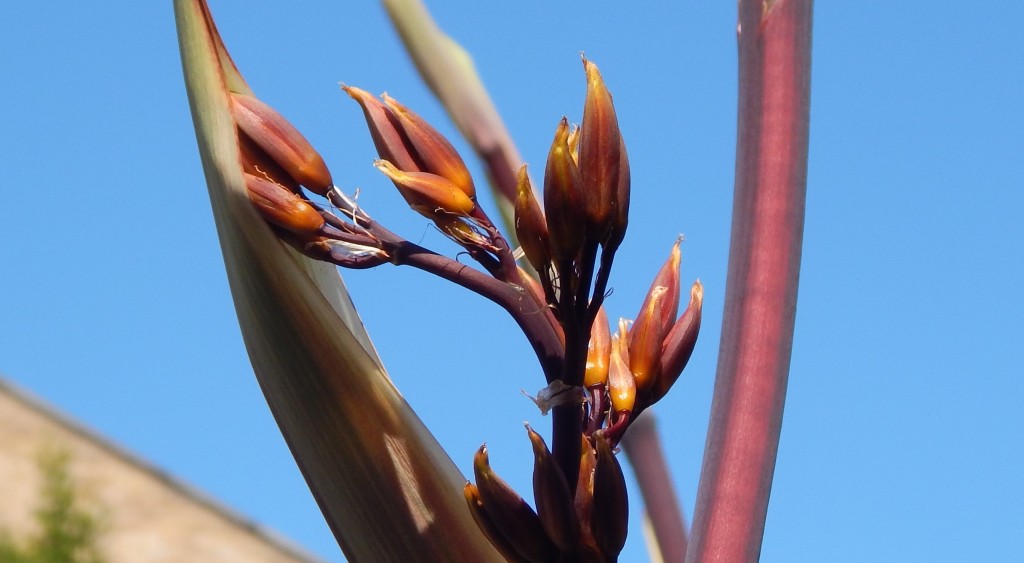
[259] Phormium tenax, New Zealand Flax
Introduction
You won’t be surprised if I describe Phormium tenax, New Zealand Flax, as a typical monocot! Until it flowers, it is a circle of spear-like leaves. If it does flower, the flower spike is impressive for its size.
In New Zealand it is just called Flax and it may also be called New Zealand Hemp. Its Maori name is Harakeke.
It is not a relative of Linum usitassimum, Common Flax, the widely used domesticated plant but derives its name from similar usage.
Taxonomy
Kingdom – Plants
Division – Vascular Plants
Class – Angiosperms (Flowering Plants)
Clade – Monocots
Order – Asparagales
Family – Asphodelaceae
Subfamily – Hemerocallidoideae
Genus – Phormium
Scientific Name – Phormium tenax
It has many cultivated varieties.
Name
Phormium is New Latin, from Greek phormion, a ‘small mat’, a diminutive of phormos ‘mat’ or ‘basket for carrying corn’ from pherein to ‘carry.’ Tenax, from Latin tenere, to hold, means clinging or tenacious. Both come from its use to make ropes and textiles. Flax and hemp also derive from its uses.
Description
Phormium tenax is a typical monocot. It forms a clump of long pointed leaves about two metres long.
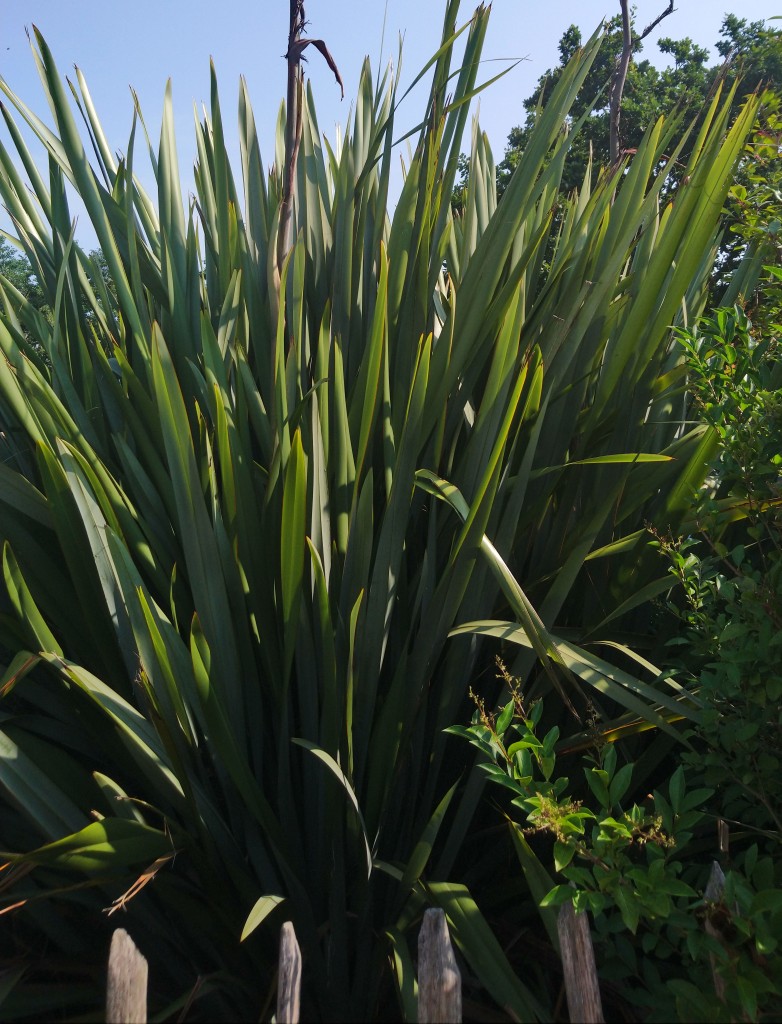
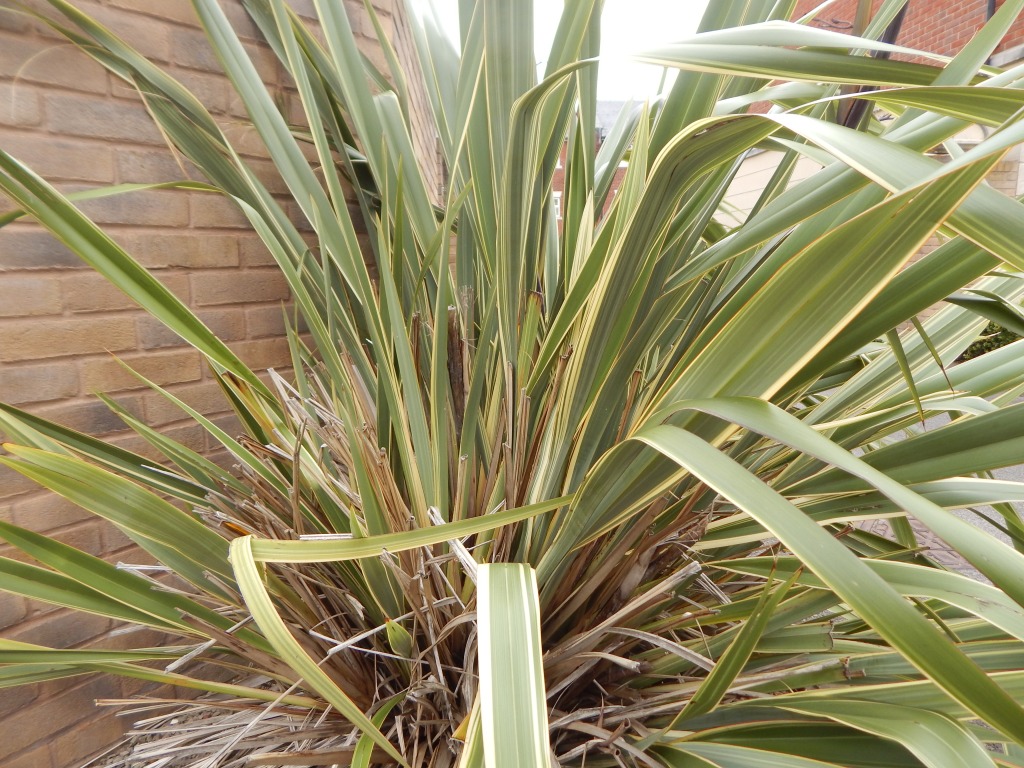
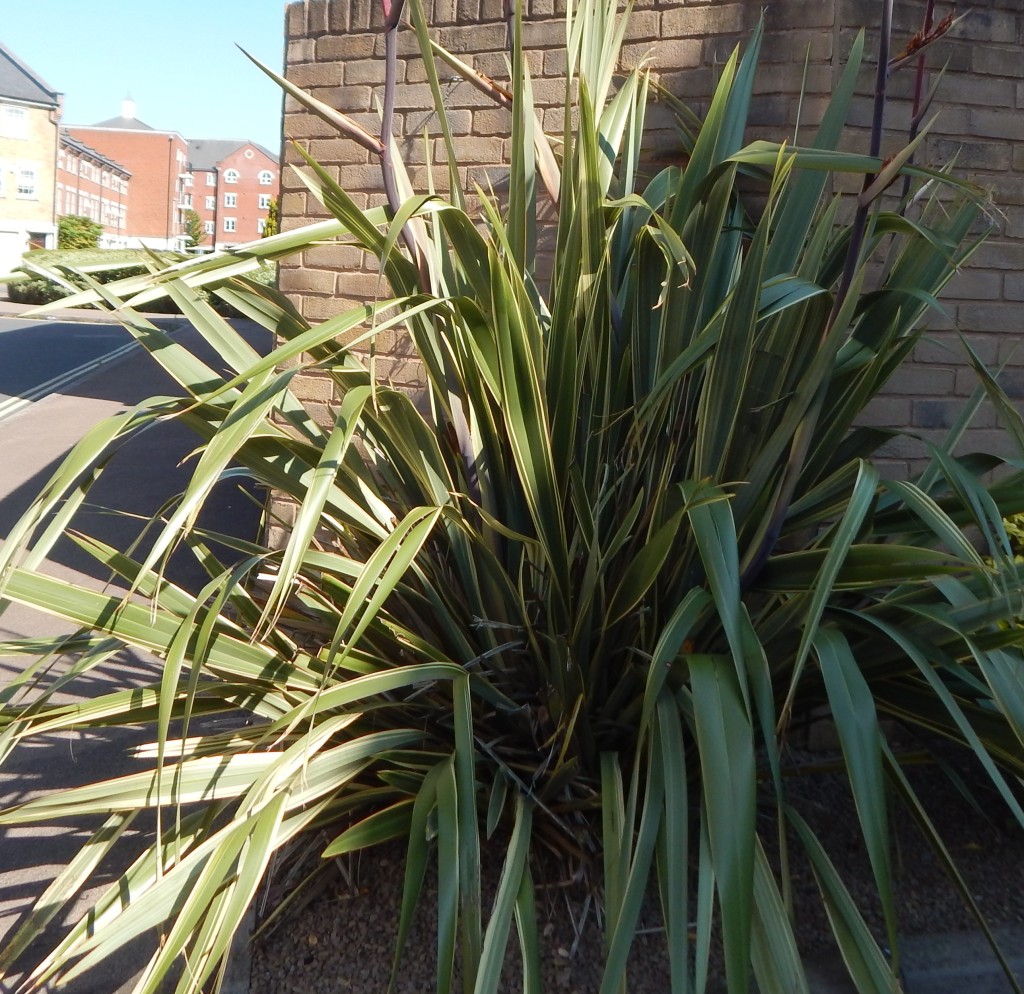
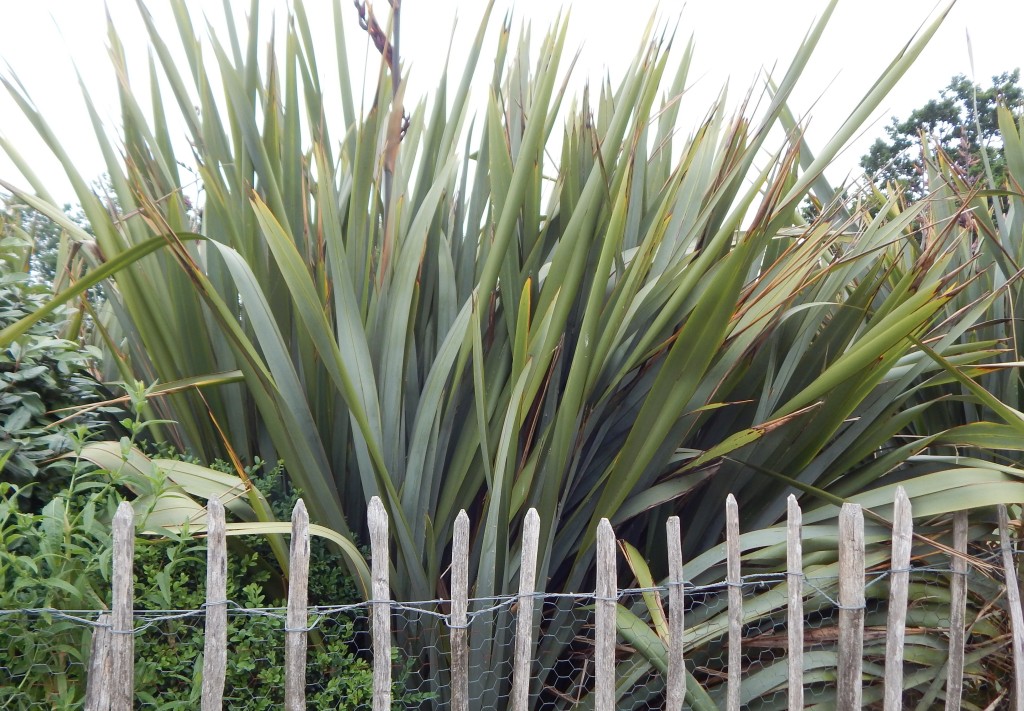
The flowering shoot grows to four or five metres with impressive red flowers.
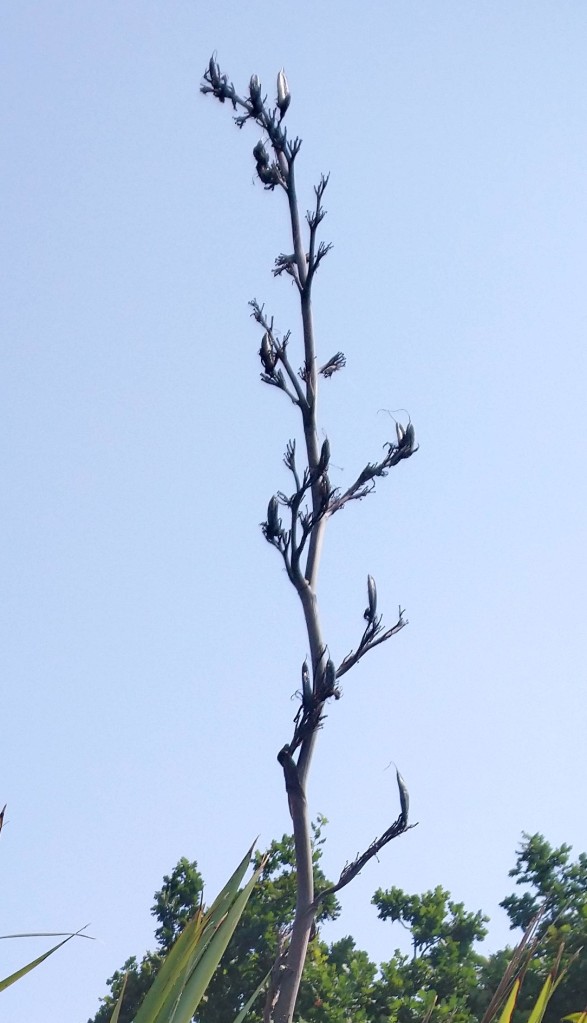
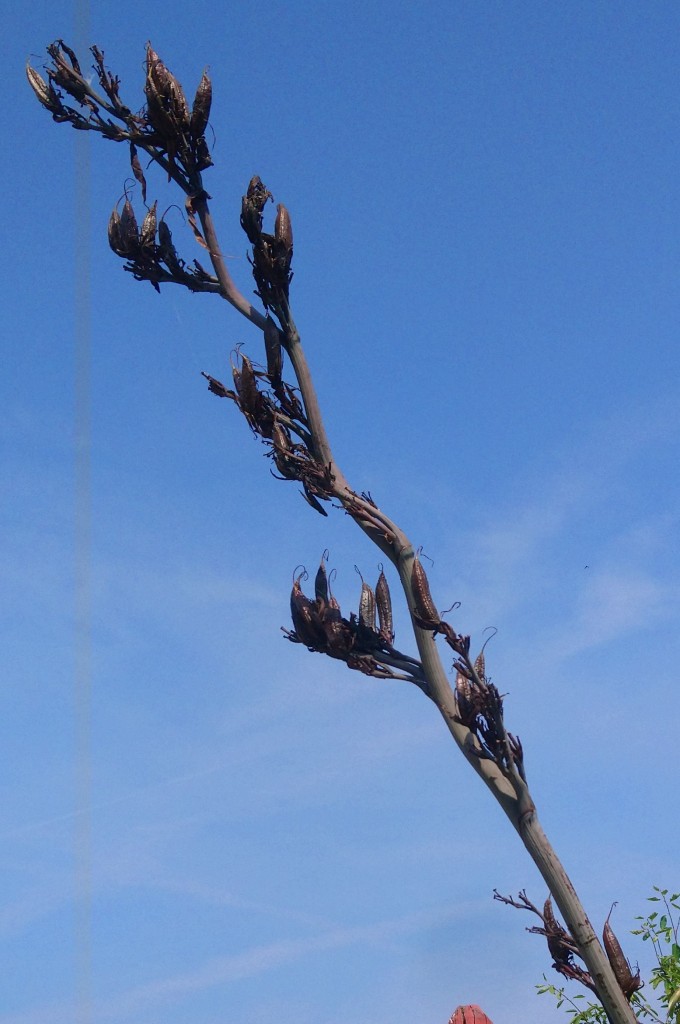
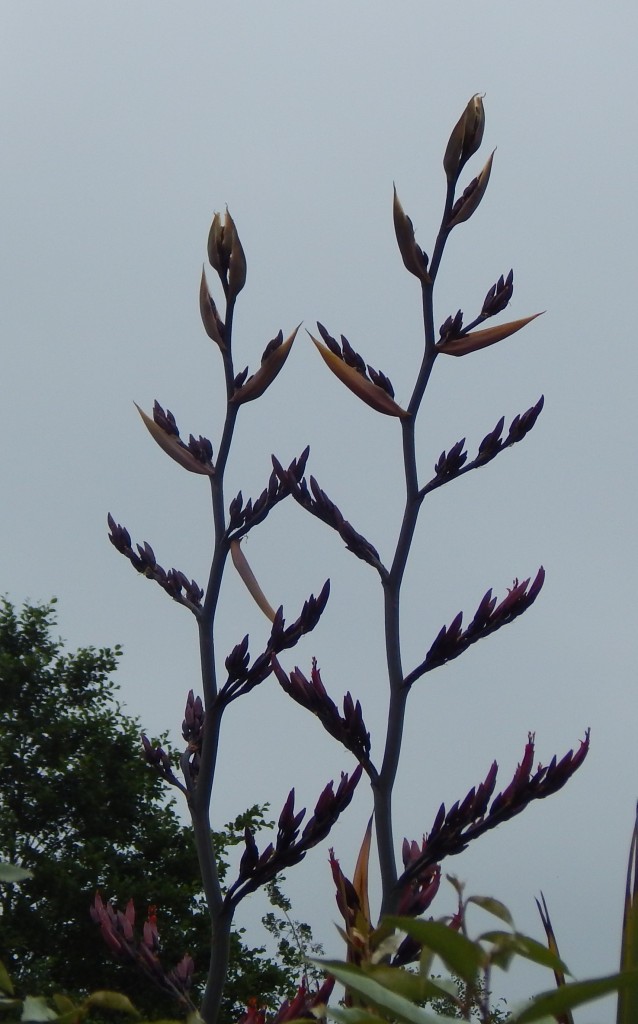

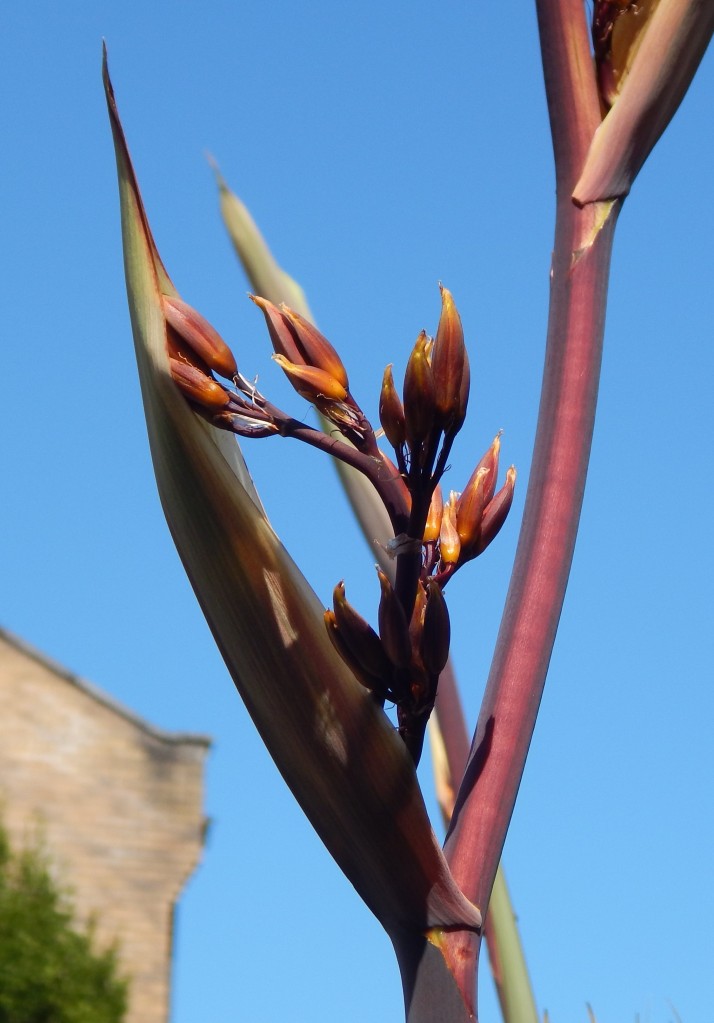

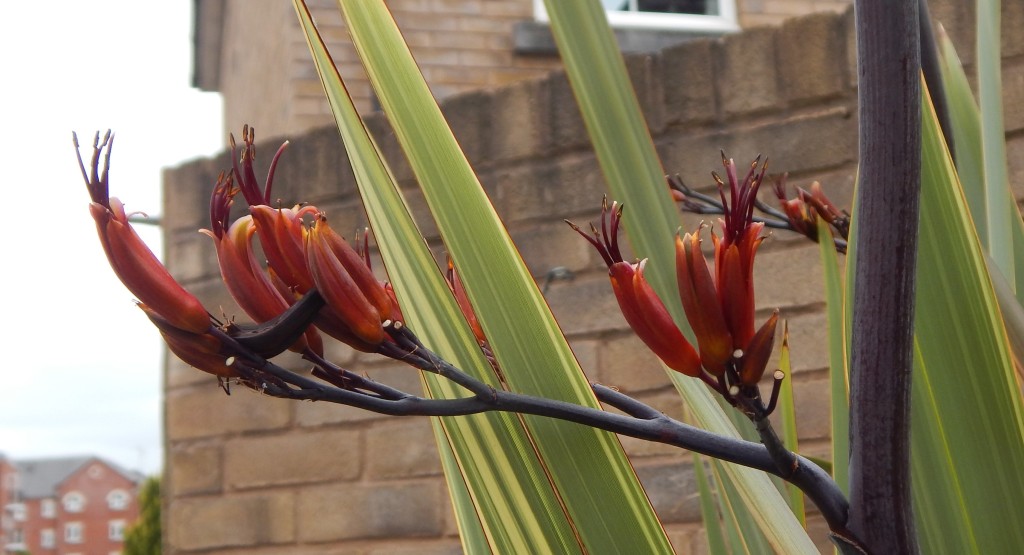

The fertilized flowers produce seed pods.

Habitat and use
New Zealand Flax is native to New Zealand and Norfolk Island – a small island Australian Territory located roughly between New Zealand and mainland Australia.
The leaves used to be used widely used by Maoris to make textiles and baskets. In the Nineteenth Century they were used to make string and rope for export.
New Zealand Flax is now a popular garden plant especially in coastal areas. It comes in cultivars with leaves of red, pink, bronze, green or striped colours. They are grown primarily for their attractive leaves. The flowers, when they do appear, are relatively short-lived but impressive. Varieties produce red or yellow flowers.



Other Notes
I suspect that this is a plant that owes its popularity to Global Warming. Like [093] the New Zealand Cabbage Tree and Yucca species. Warmer weather makes it more likely to survive and flourish and to produce its flower spikes.
See also
There is only one other species of Phormium, Phormium colensoi, like a smaller version of Phormium tenax and also native to parts of New Zealand. It is also cultivated as an ornamental plant in various cultivars.
